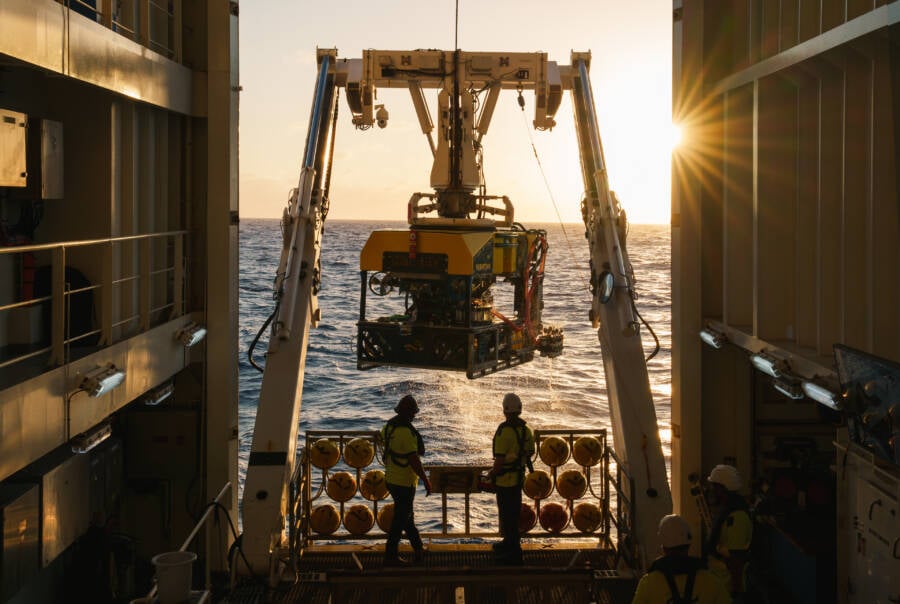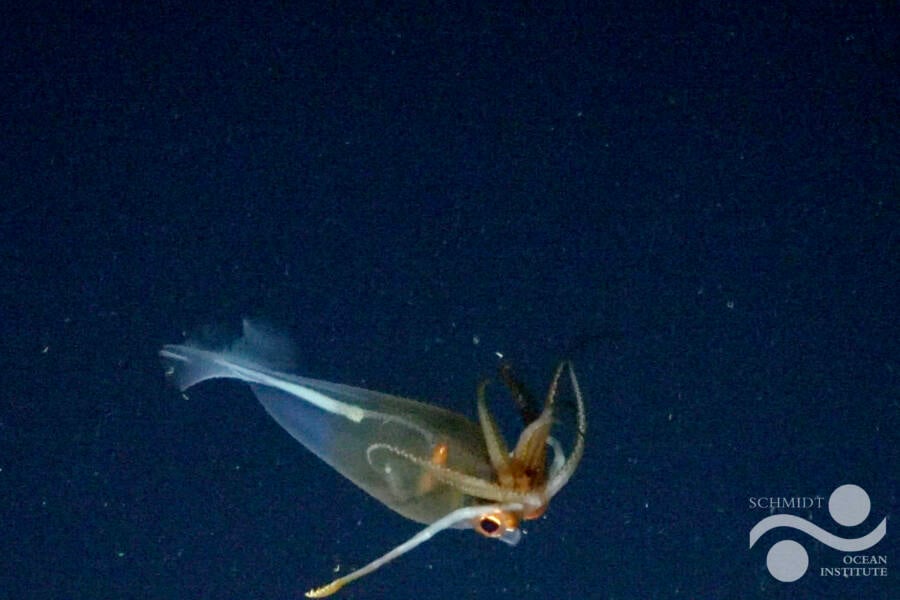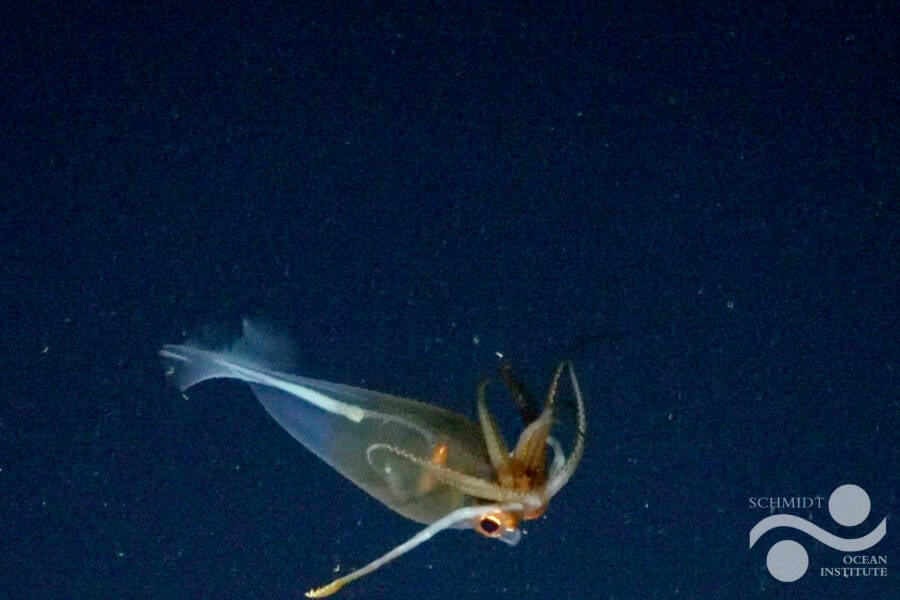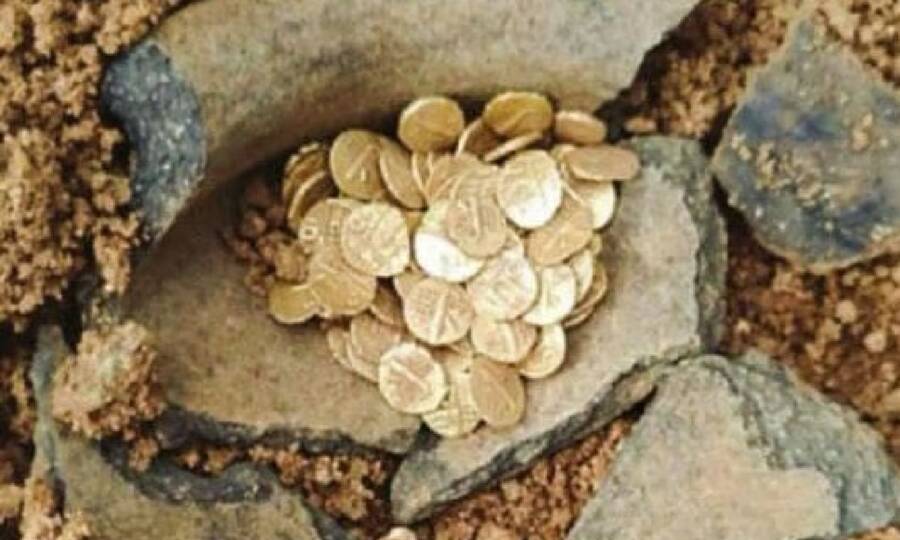Giant of the Deep: Colossal Squid Spotted Alive for the First Time Ever!

Schmidt Ocean InstituteROV SuBastian being lowered into the ocean at sunset.
Chief scientist Dr. Michelle Taylor of the University of Essex said the team was initially unsure what the squid was but kept filming it because it was “beautiful and unusual,” per the BBC.
Even more remarkably, just two months prior, on Jan. 25, a previous team on the Falkor (too) had also captured the first confirmed footage of another elusive squid, the glacial glass squid (Galiteuthis glacialis) in the Southern Ocean near Antarctica — yet another species that had never been seen alive in its natural environment.

Schmidt Ocean InstituteThe first confirmed footage of the glacial glass squid captured on Jan. 25, 2025.
“The first sighting of two different squids on back-to-back expeditions is remarkable and shows how little we have seen of the magnificent inhabitants of the Southern Ocean,” said Schmidt Ocean Institute’s executive director, Dr. Jyotika Virmani. “Fortunately, we caught enough high-resolution imagery of these creatures to allow the global experts, who were not on the vessel, to identify both species.”
The SuBastian ROV also previously captured the first confirmed footage of the Ram’s Horn Squid back in 2020 and the Promachoteuthis in 2024.
“These unforgettable moments continue to remind us that the ocean is brimming with mysteries yet to be solved,” said Virmani.
After reading about the first footage captured of the elusive colossal squid, learn all about the Kraken, the terrifying giant squid of ancient lore. Or, check out 39 vintage drawings of sea creatures from centuries past.



















